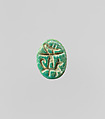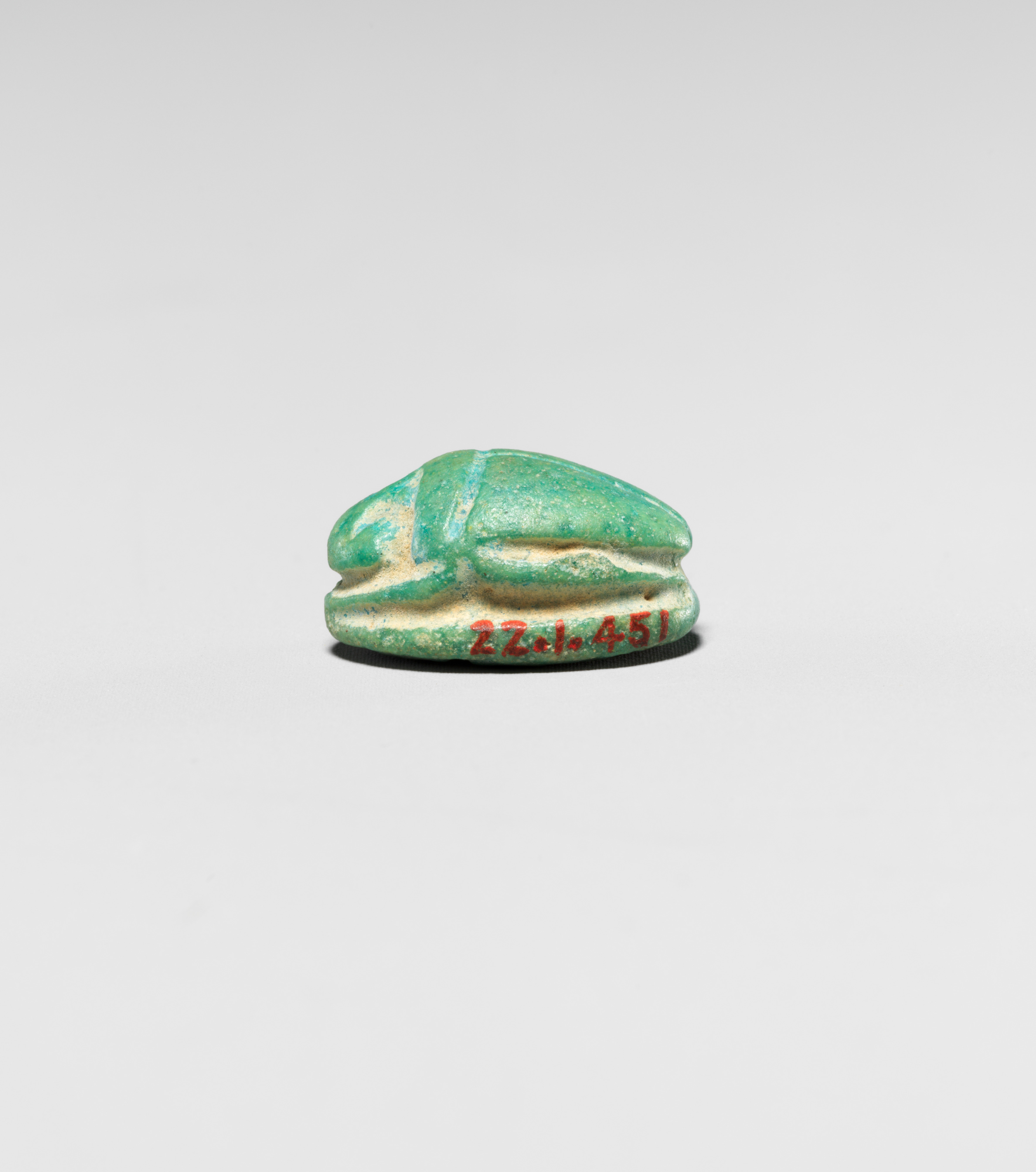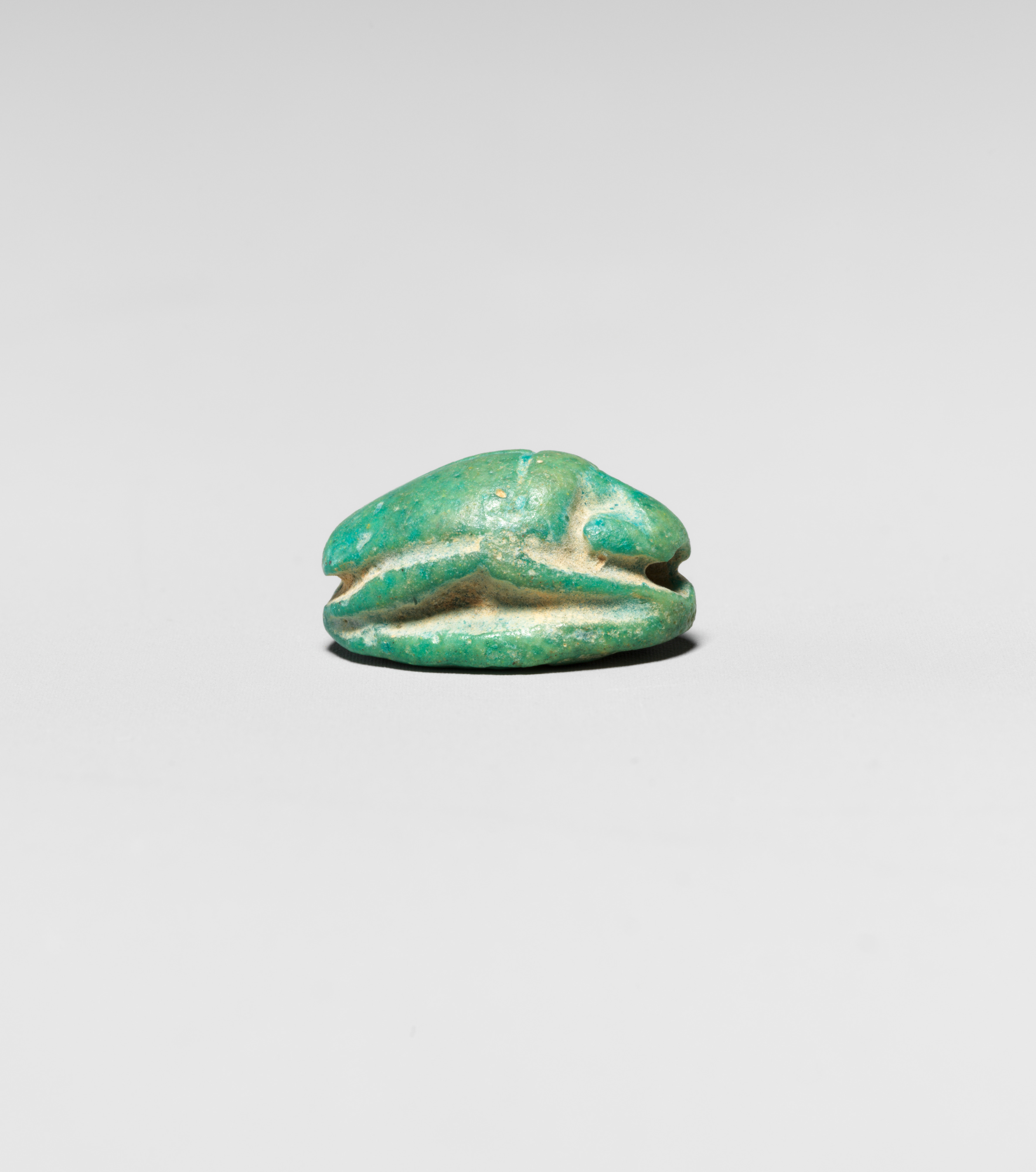Scarab with Figure of Seth-Baal on a Lion
New Kingdom
The ancient Egyptians adored the dung beetle as a symbol of the daily passage of the sun, as it pushed the dung ball forward it mirrored the sun disk moving across the sky. From the First Intermediate Period to the Late Period, the scarab was a popular shape for small amulets and stamp seals as a symbol for creation and resurrection. Already in the early 2nd millennium BC, Egyptian scarab seals spread to the Levant and Crete and soon local imitations began to appear.
Seth-Baal is a winged deity that appears on scarabs in the late New Kingdom (ca. 1295–1070 B.C.). When the Near Eastern storm god Baal was introduced in Egypt at the end of the Middle Kingdom, he was identified with the Egyptian god of chaos (and bad weather), Seth. On this scarab, Seth-Baal spreads both his wings wide open. He wears a horned conical headdress with long streamer at the back, and he displays a very prominent pointed beard. The deity stands on the back of a lion, which is uncommon for Egyptian deities but is often the case for depictions of Near Eastern gods and goddesses.
Due to rights restrictions, this image cannot be enlarged, viewed at full screen, or downloaded.
This artwork is meant to be viewed from right to left. Scroll left to view more.





